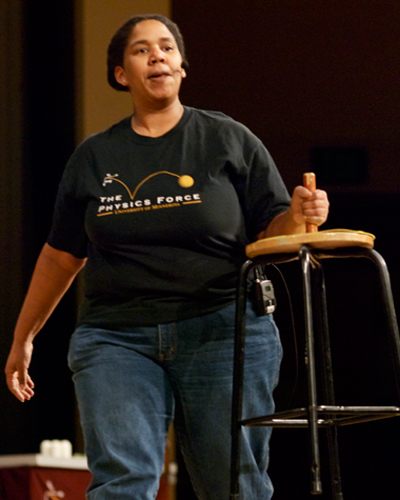What Happens
This demonstration uses a piece of rubber with a mouth piece, used to draw the air out from underneath the rubber. A force member places the rubber on a chair, draws the air out and lifts the chair up, showing the strength of the seal.
How it Happens
The stool and the base are smooth and will seal out any atmosphere from getting between them. When the demonstrator lifts on the handle, there is a small cavity formed because of the flexibility of the rubber base. There is very low pressure in this cavity, thus allowing the greater pressure of the atmosphere to push the rubber base and the top of the stool together hard enough to lift the stool from the floor.
When the demonstrator lifts the corner of the rubber base, he allows air between the stool and base, equalizing the pressure with the atmosphere, and the cavity is no longer a low pressure area.
Vocabulary
atmospheric pressure: This is also the pressure caused by air, but usually thought of as the normal value or standard value of 14.7 pounds per square inch. The atmospheric pressure at the place where we are on the face of the earth is usually less than this because we are above sea level, and hence have less "weight" pushing down on us. Again, used with the same activities as air pressure.
cavity: A hollowed out or empty space enclosed by some form of walls, in this case the walls will be formed by the rubber softball base and the top of the chair it will be lifting.
low pressure: A space where the pressure is fewer pounds per square inch than a neighboring space. We will use this term along with the term high pressure in order to describe the resulting force that will tend to push something one way or the other.
